Feeling down about your blues guitar jams? We'll show you how to solo over a 12-bar progression
The essential tools for a blues jam are all here – complete with a backing track to try them out on

Whether you’re a seasoned improviser or a jam-session novice, you can always refresh those 12-bar blues licks. They're timeless and always useful. We want you to start jamming over the staple progression, but we're offering the tools to get you there with some winning licks.
Start with a scale shape
A minor pentatonic scale with extra blues notes
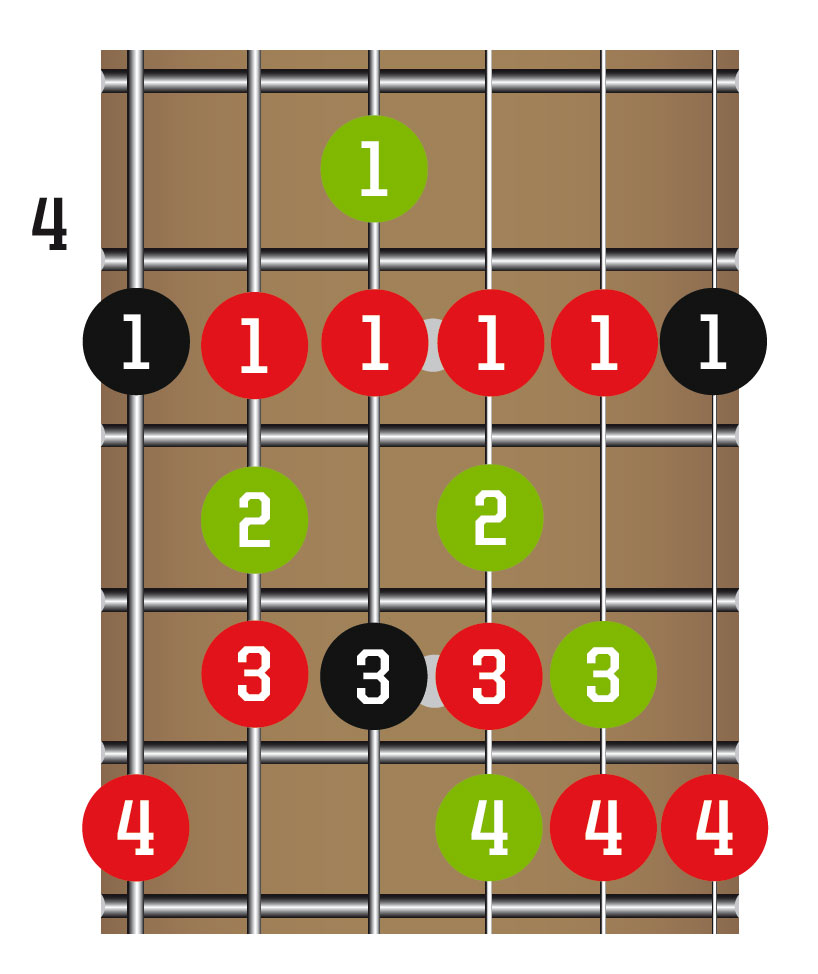
The minor pentatonic scale is a fantastic scale to jam over a 12-bar blues with, but by adding a few more notes you can infuse your blues with the slick sounds of virtuoso blues-meisters such as Joe Bonamassa, Robben Ford and more.
Practise the basic minor pentatonic scale first (black dots are root notes; red dots are other scale notes). When you get a feel for this, try adding in the extra non-scale notes that we’ve highlighted in green.
12-bar blues chord progression
| A7 / / / | / / / / | / / / / | / / / / |
| D7 / / / | / / / / | A7 / / / | / / / / |
| E7 / / / | D7 / / / | A7 / / / | / / E7 / ||
Get the MusicRadar Newsletter
Want all the hottest music and gear news, reviews, deals, features and more, direct to your inbox? Sign up here.
This is the progression you’ll be playing over. It’s the most common form of the 12-bar blues, but it is common in music to see the arrangement of chords moved about a bit.
Notice that there are only three chords throughout: A7, D7 and E7 (a I-IV-V in the key of A). We've provided a backing track for you to jam over.
Backing track
The opener (I chord)
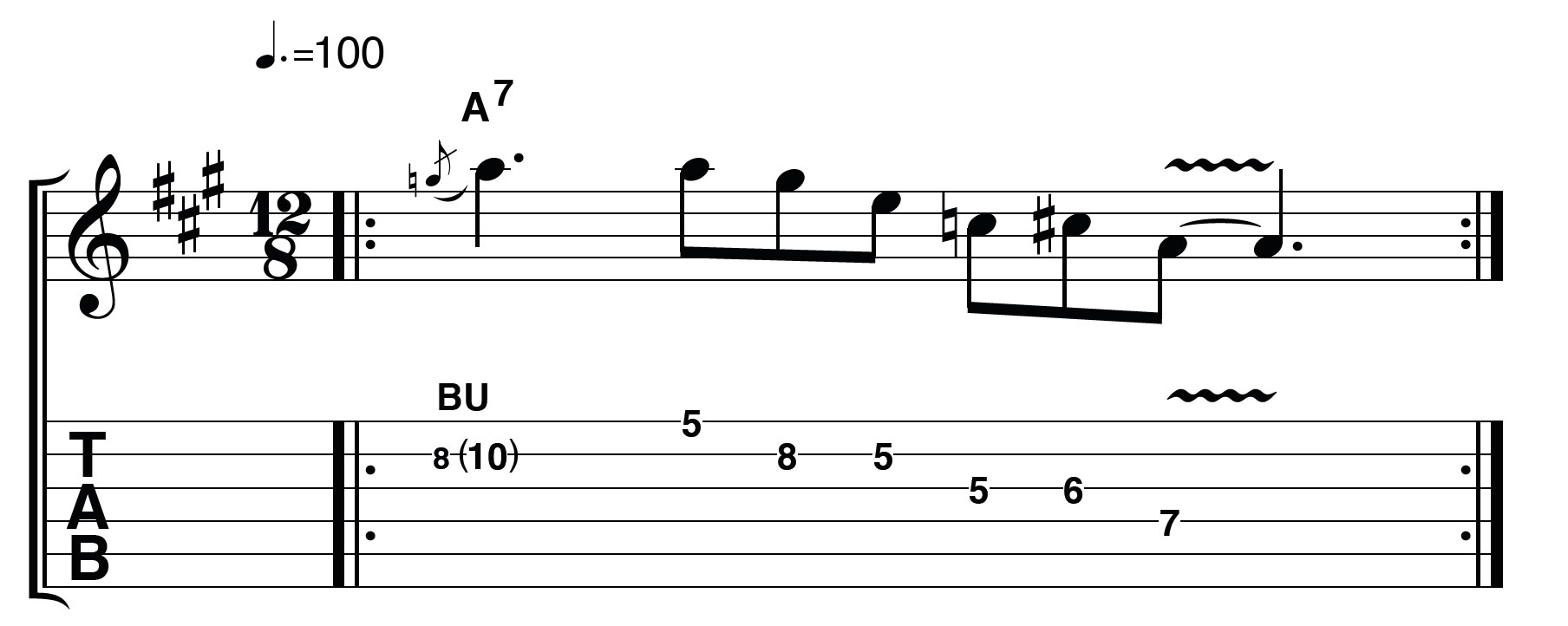
This lick is played over an A7 chord. Solos tend to sound much better if you can land on a note from the backing chords, so, in this case, we’re adding a 6th fret C# note from the A7 - all the rest of the notes come from the minor pentatonic scale.
The change (IV chord)
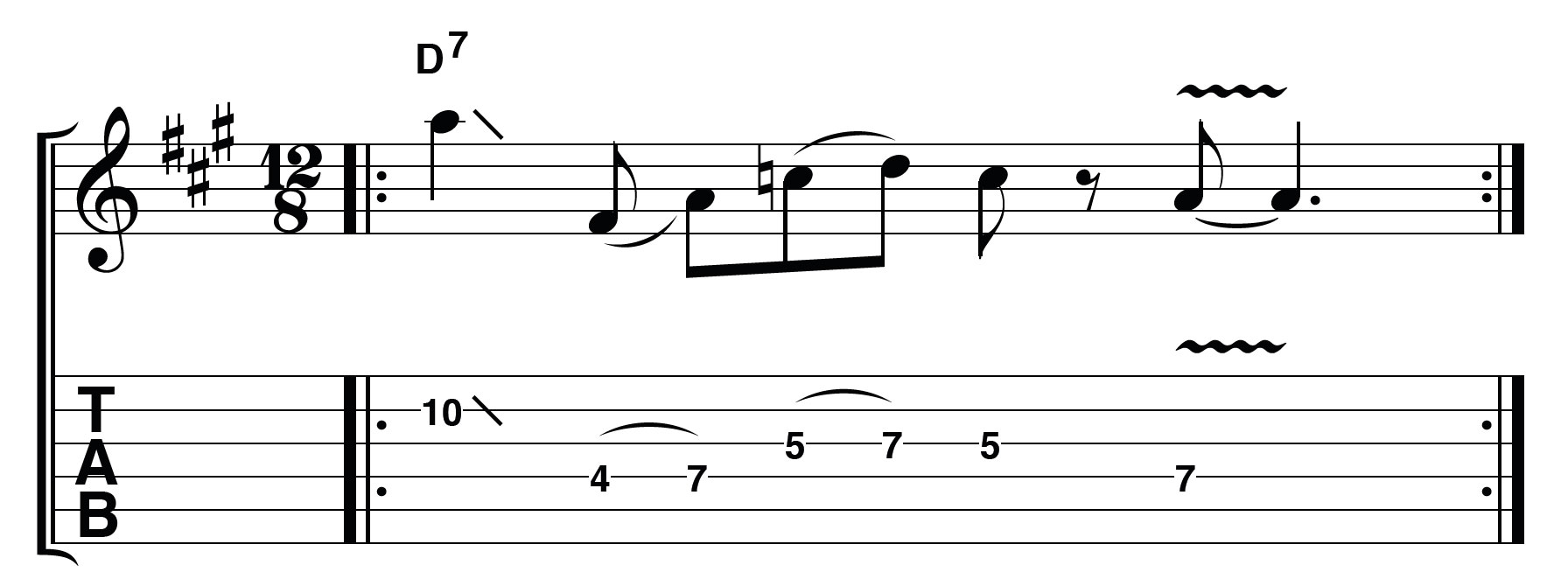
Although the chord has changed to D7 here, the A minor pentatonic notes all still work. Make a feature of the chord change by adding the major 6 interval, which is on the 4th fret of the fourth string. This is a fantastic note to add when playing over a IV chord.
The peak (V chord)
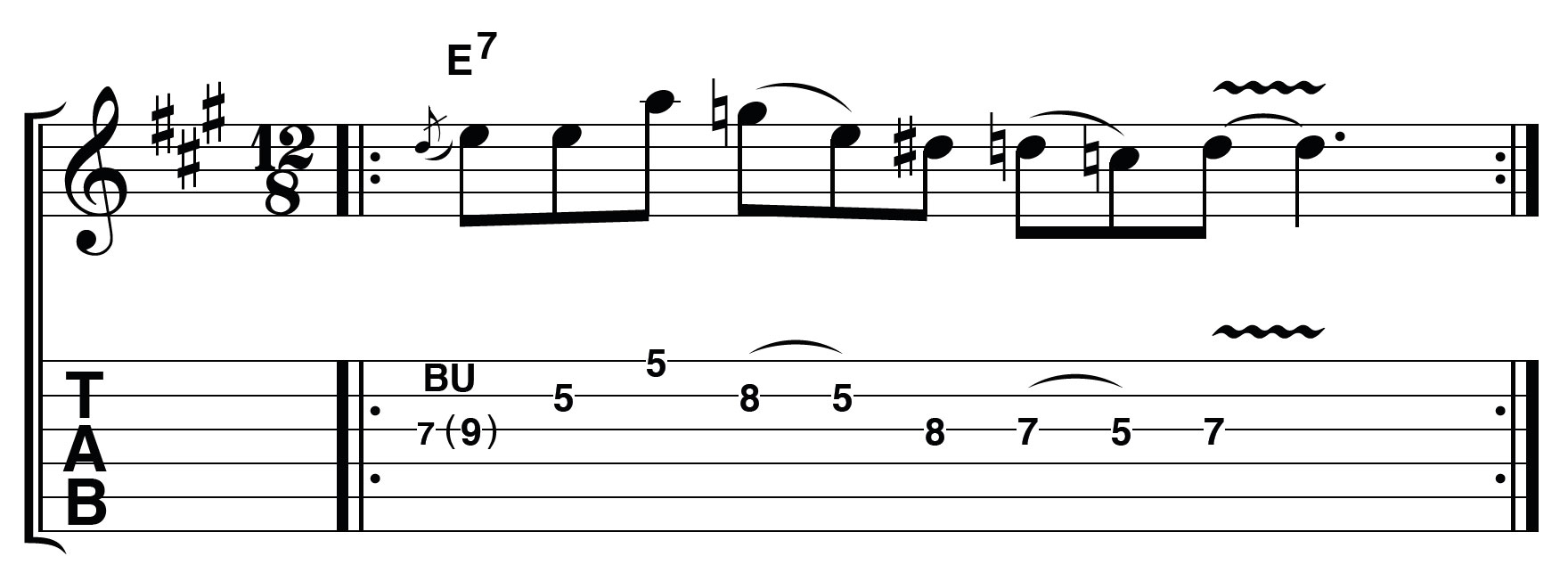
The V chord is the point at which the 12-bar blues is at it’s most tense, so why not make the most of the tension and make the solo even more dramatic? The b5th interval sounds great over a 12-bar blues, especially if you save it for the V chord.
The turnaround
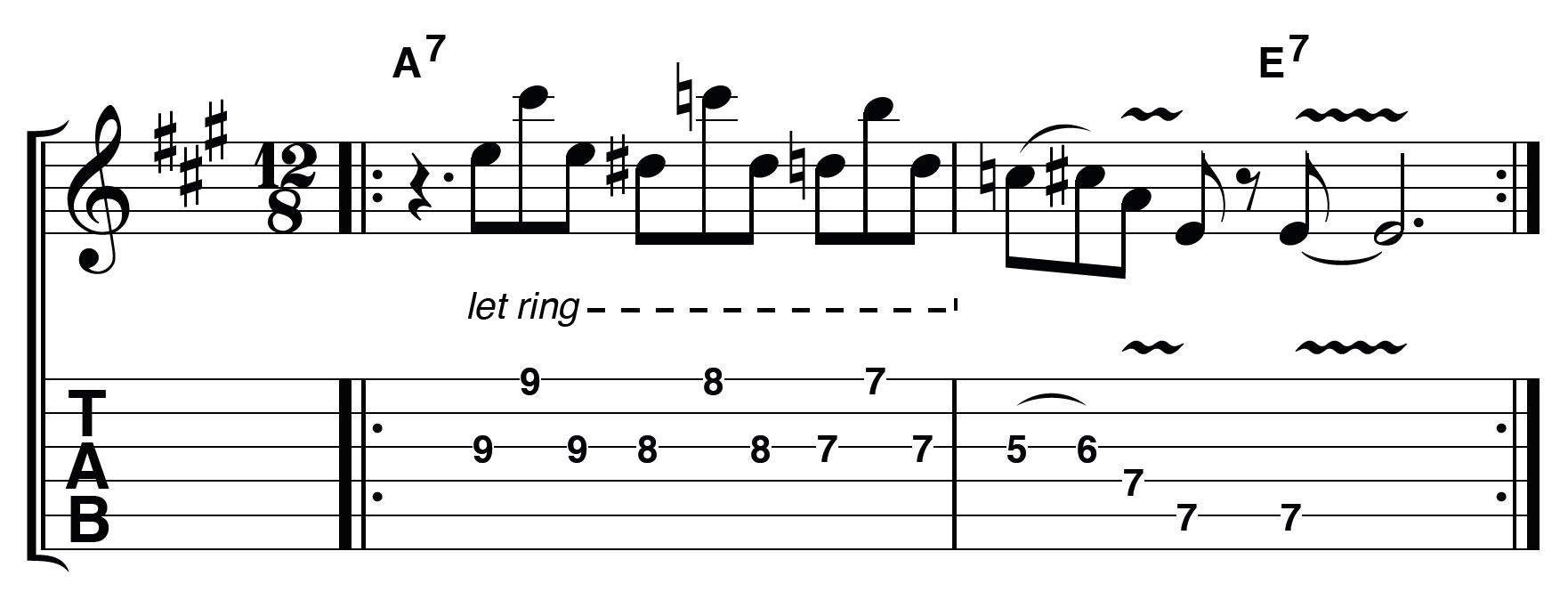
The final two bars of a 12-bar blues are known as a ‘turnaround’. This is the point that we prepare to go back to the start of the loop and start the next phase of the solo. Most blues players have a collection of ‘turnaround’ licks that round off their solos.
Check out more guitar lessons
MusicRadar is the number one website for music-makers of all kinds, be they guitarists, drummers, keyboard players, DJs or producers...
- GEAR: We help musicians find the best gear with top-ranking gear round-ups and high-quality, authoritative reviews by a wide team of highly experienced experts.
- TIPS: We also provide tuition, from bite-sized tips to advanced work-outs and guidance from recognised musicians and stars.
- STARS: We talk to musicians and stars about their creative processes, and the nuts and bolts of their gear and technique. We give fans an insight into the craft of music-making that no other music website can.










